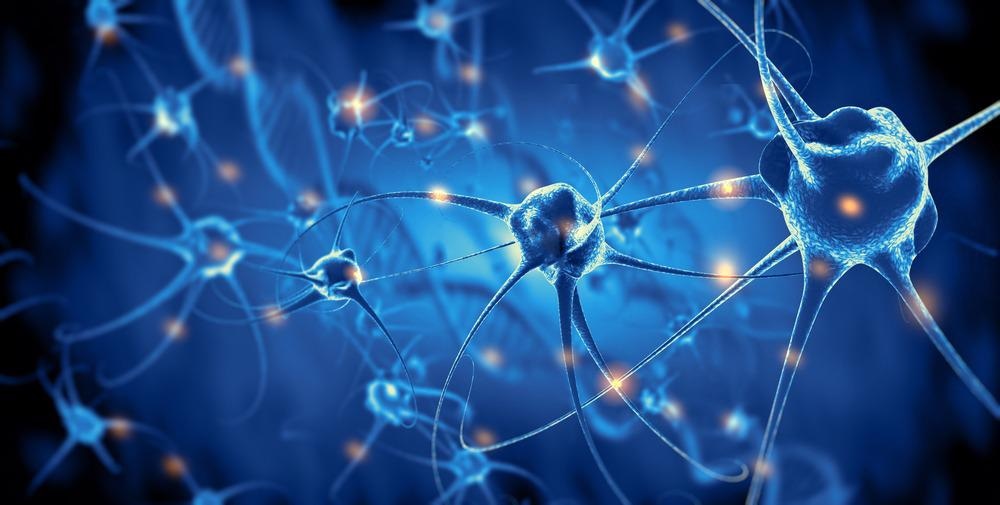Emerging research on nerve repair has consisted of MXenes being used to improve nerve guidance conduits, which would also enhance its subsequent electrical conductivity. This pre-proof research has been submitted in the journal, Additive Manufacturing.

Study: A conductive network enhances nerve cell response. Image Credit: Giovanni Cancemi/Shutterstock.com
The Need for Advanced Nerve Guidance Conduits
The peripheral nervous system is a little different from the central nervous system in that these nerves have a strong potential for regeneration and this can be through nerve grafting.
Nerve grafting is the gold standard for peripheral nerve injuries that do not have the ability to be bridged through direct epineural suturing.
A nerve guidance conduit can be described as an artificial nerve graft, which is able to guide axonal regrowth for facilitating nerve regeneration, and the use of nerve conduits have been used for decades for the treatment of peripheral nerve injury. The significance of these grafts can be found within the severity of peripheral nerve injuries.
Peripheral nerve injuries are a very significant health problem affecting 2.8% of trauma patients per year and this injury can cause destruction, damage or crushing of the peripheral nerve. This type of disorder can result in changes in sensation, with symptoms such as, decreased sensation that can cause numbness and tingling, as well as burning, shooting, and sharp ‘electrical’ pains.
The peripheral nerve consists of bundles of endoneurium wrapped axons bundled into fascicles that are wrapped in perineurium. The function of Schwann cells provides a myelin sheath that increases the conduction for myelinated nerves.
The main mechanisms behind peripheral nerve injuries can include stretching, compression and transection.
Compression of vascular structures can cause ischemic injury and direct nerve, or myelin compression can also lead to peripheral nerve injury. Additionally, transection, which can consist of cutting the nerve in a partial or complete manner can also lead to this type of injury. This mechanism can affect sensory and motor nerves and affect the quality of life of trauma patients.
The need for a novel and innovative strategy to improve nerve guidance conduits in peripheral nerve repair would enable the reduction of this issue and increase the health of those affected.
Nerve Conduit Research
Nerve guidance conduits have been used as a bridging substrate that is able to provide temporary mechanical support, in order to allow transected nerves to sprout over the nerve gap, as well as aiding in the inhibition of fibrous tissue infiltration. The use of these conduits has been used commonly as an alternative implant for peripheral nerve repair.
Over recent years, the advancements in this field have consisted of novel materials to develop nerve guidance conduits and this has included poly-L-lactic acid (PLLA) due to its properties such as good biodegradation and processibility. However, its non-electrically conductive material has illustrated its lack of compatibility with reconstructing the conductivity of nerves as it would lead to a lack of electrical signal transduction as well as ineffective coordination of cellular function and nerve regeneration.
These challenges with the use of PLLA have led researchers to look towards other materials and the innovative solutions that nanotechnology provides, such as graphene oxide, gold nanoparticles and MXene.
The researchers of this pre-proof study have utilized MXene, which is a two-dimensional layered transition metal carbide, due to its impressive properties such as superior electrical conductivity as well as carrier mobility. Additionally, this nanomaterial has a remarkably useful surface that is high in hydrophilic functional groups, and this can enhance cell attachment, which further illustrates the potential of MXene as a candidate for fabricating conductive nerve guidance conduits.
This potential of MXene resulted in an innovative experiment consisting of creating effective MXene nanosheets that were coated on the surface of PLLA particles and ultimately produced a three-dimensional continuous conducive network.
This pre-proof research may advance current technology within this field as it enables a continuous pathway for effective and efficient charge transmission, and this could ultimately increase the electrical conductivity levels of current nerve guidance conduits.
Additionally, the use of 3D printing or laser additive manufacturing in this process is significant as it provides the ability to produce precise components of any complex structure through the use of a path-controlled laser beam that is able to fabricate products layer by layer.
The addition of this method for this research ensured that the network structure was retained as well as tight MXene contact which aided in providing a strong path for electronic transmission.
Future Outlook
Advancements such as through this research can be significant for patients with peripheral nerve injury as even with early diagnosis and accurate nerve repair, the functional recovery of this injury may never be the same as before the injury occurred.
The use of this nanotechnology innovation could further biomedical research and possibly change this experience for patients with higher recovery potential.
This study could be used to advance fields such as nanotechnology as well as regenerative medicine and this research can only be furthered through large-scale experimentation in order to evaluate the use of MXene for enhancing nerve cell responses for clinical patient care.
Reference
Qi, F., Liao, R., Shuai, Y., Pan, H., Qian, G., Peng, S. and Shuai, C., (2022) A conductive network enhances nerve cell response. Additive Manufacturing, p.102694. Available at: https://www.sciencedirect.com/science/article/pii/S2214860422000999
Further Reading
Breyer, K. and Roth, S., (2020) Miller's anesthesia. 9th ed. pp.1079-1112.
Gibson, G., (2007) Peripheral Nerve Injuries. Physical Rehabilitation, pp.473-513. Available at: https://doi.org/10.1016/B978-072160361-2.50021-1
Muheremu, A. and Ao, Q., (2015) Past, Present, and Future of Nerve Conduits in the Treatment of Peripheral Nerve Injury. BioMed Research International, 2015, pp.1-6. Available at: https://dx.doi.org/10.1155%2F2015%2F237507
Disclaimer: The views expressed here are those of the author expressed in their private capacity and do not necessarily represent the views of AZoM.com Limited T/A AZoNetwork the owner and operator of this website. This disclaimer forms part of the Terms and conditions of use of this website.